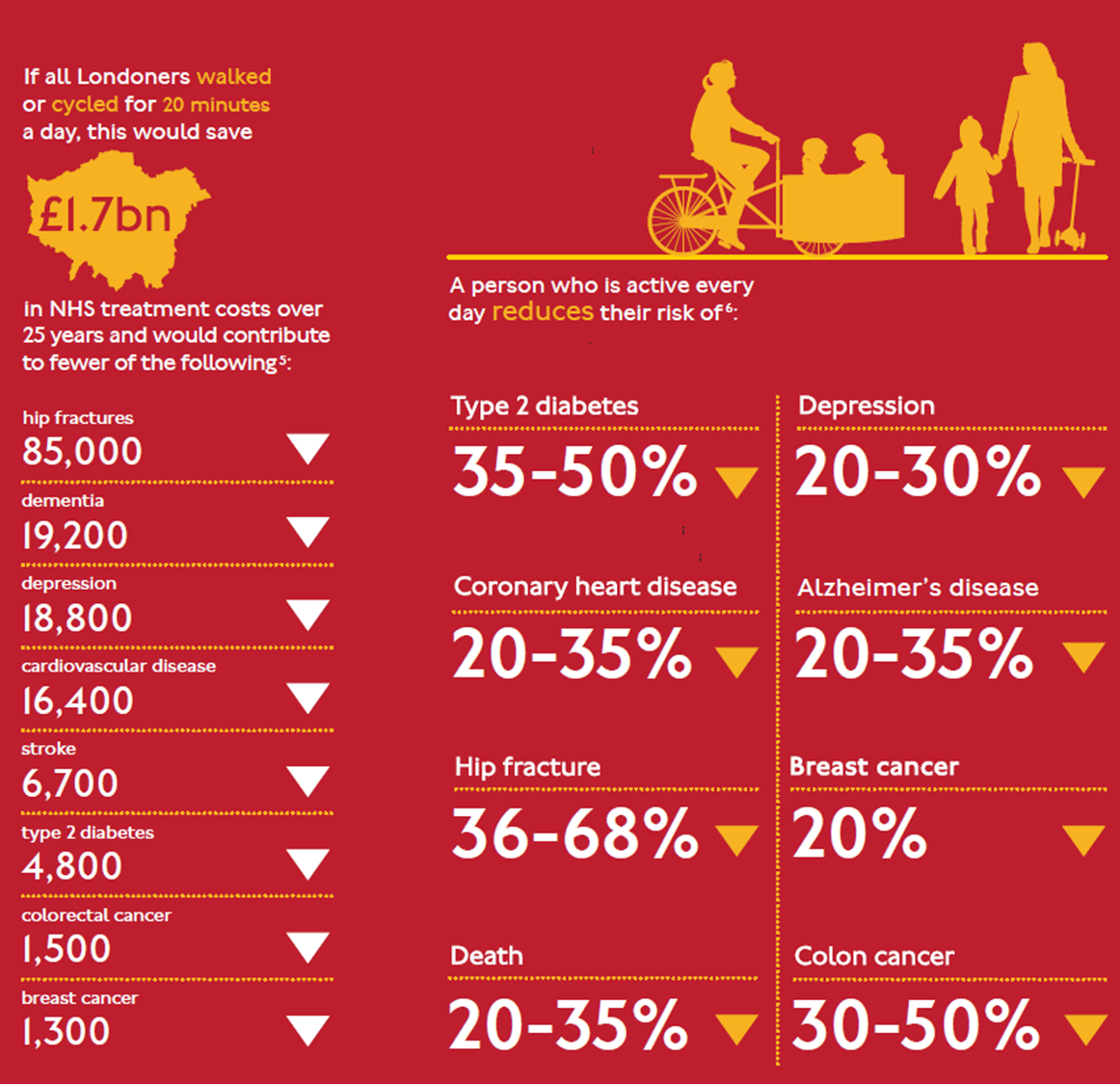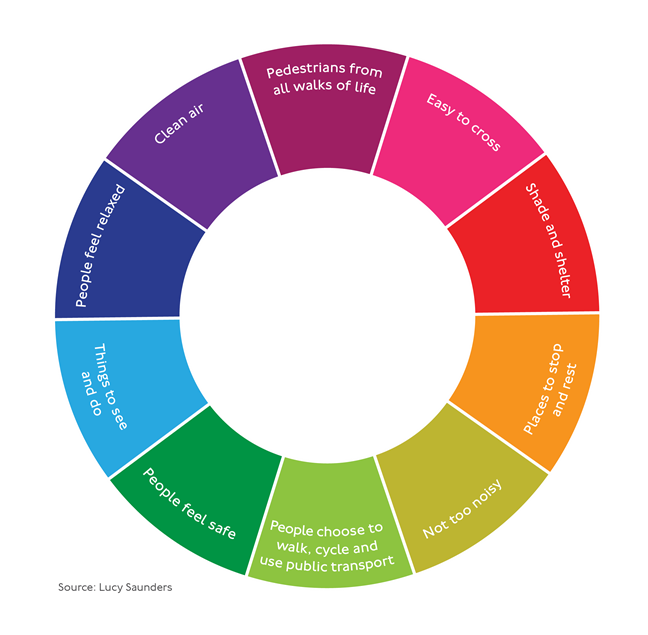Healthy Streets, Thriving Cities
Lucy Saunders is a Consultant in Public Health at the Greater London Authority and Transport for London leading on transport. Lucy developed the Healthy Streets Approach set out in the recently launched recently launched ‘Healthy Streets for London’ policy which sets out an important new approach for the Mayor and TfL, working with its partners and stakeholders to make London’s streets better for everyone’.
Transport has a huge influence on the character of our cities, and the experience of living, working and spending time in them. As urban transport authorities, we don’t just help move people around cities, we tackle strategic challenges, from poor air quality to improving access to employment opportunities. It is clear that investment in transport is a means to an end, not an end in itself. For many years, our cities have depended on cars for people to get around. Reliance on them is resulting in congestion and air pollution as these cities grow. It has also tied too many of us into living inactive lives, contributing to one of the most serious health challenges we have ever faced. Inactive lifestyles are one of the biggest threats to public health, increasing the risk of developing a range of chronic diseases including diabetes, dementia, depression, heart disease and cancer. Urban transport authorities have a crucial role to play in addressing that threat. After all, walking, cycling and using public transport to get around are the easiest ways to stay active in urban areas. That’s why UTG recently convened a meeting bringing together a range of bodies, from Public Health England to the Treasury, to look at how what we can do to deliver the greatest health benefits from our transport systems, working together. At that meeting, I presented the Healthy Streets Approach the Mayor and TfL are taking in London. While we have had some success in moving people out of cars in London, we know there is more we need to do. Our new approach is about putting people and their health at the heart of transport planning to deliver the Mayor’s determination to help every Londoner live an active life, to improve air quality and make London a fairer, more inclusive city. It is our ambition for all Londoners to walk or cycle for 20 minutes every day. Two 10-minute periods of brisk walking or cycling a day is enough for adults to get the level of physical activity recommended to avoid the greatest health risks associated with inactivity. At present, only about a third of adults in the Capital are reporting this level of activity on a given day.

If we achieve this, one in six early deaths among Londoners could be prevented and many more people would avoid cancer, heart disease and diabetes. It would help combat social isolation, and reduce congestion as well. As more than 90 per cent of Londoners already walk each week, we are building on a strong foundation. Most journeys made by Londoners start, end, or happen entirely on our streets. Indeed, 80 per cent of Londoners’ travel time is spent on our streets – including bus trips and journeys to and from Tube and rail stations. We are putting the Healthy Streets Approach at the heart of everything we do. We will prioritise walking, cycling and public transport over private vehicles, investing record sums to ensure that we improve outcomes for customers. The funding we have allocated will be invested in a fundamentally new way, looking not at single transport modes as we have done in the past, but taking a wider ‘whole streets’ view of how streets function to best deliver for people. We will make streets less traffic dominated and more welcoming, tackle poor air quality and ensure that housing, shops and services are built close to transport interchanges, to make sure more people have what they need within walking distance of home. Every part of our business will prioritise Healthy Streets. Across the Capital, we will focus on improving the experience of travelling through and spending time on London’s streets. The Healthy Streets Approach uses 10 evidence-based indicators of what makes streets attractive places. Working towards these will help to create a healthier city, in which all people are included and can live well, and where inequalities are reduced. 
The benefits are not limited to good health and wellbeing. The things that make a street work well for people are the same things that make a street work well for local and international businesses, and that create a resilient and sustainable environment. We cannot deliver Healthy Streets alone. We need to work in partnership with public, private and community sectors to make sure we deliver against the 10 Healthy Streets Indicators. We are already working with London boroughs, developers and landowners to ensure they can embed the approach in the design of their streets and public spaces. The Metropolitan Police provide on-street enforcement and education to help people to feel safe on our streets. We are working with businesses which will benefit from the economic improvements the Healthy Streets Approach will deliver, and freight companies to manage the impact of freight on our streets. We’re providing training and support to schools and community groups to promote cycling, walking and public transport. This is a challenge common to all cities across the UK and the Healthy Streets Approach can be adapted to address the unique challenges and opportunities of any city. We will continue to share our experience with other cities. Working together, we can create attractive, thriving streets which encourage active travel and also incorporate sustainable servicing and deliveries. This can start to address our nationwide health crisis, while supporting local businesses and regional economies.
Lucy Saunders, Transport for London

